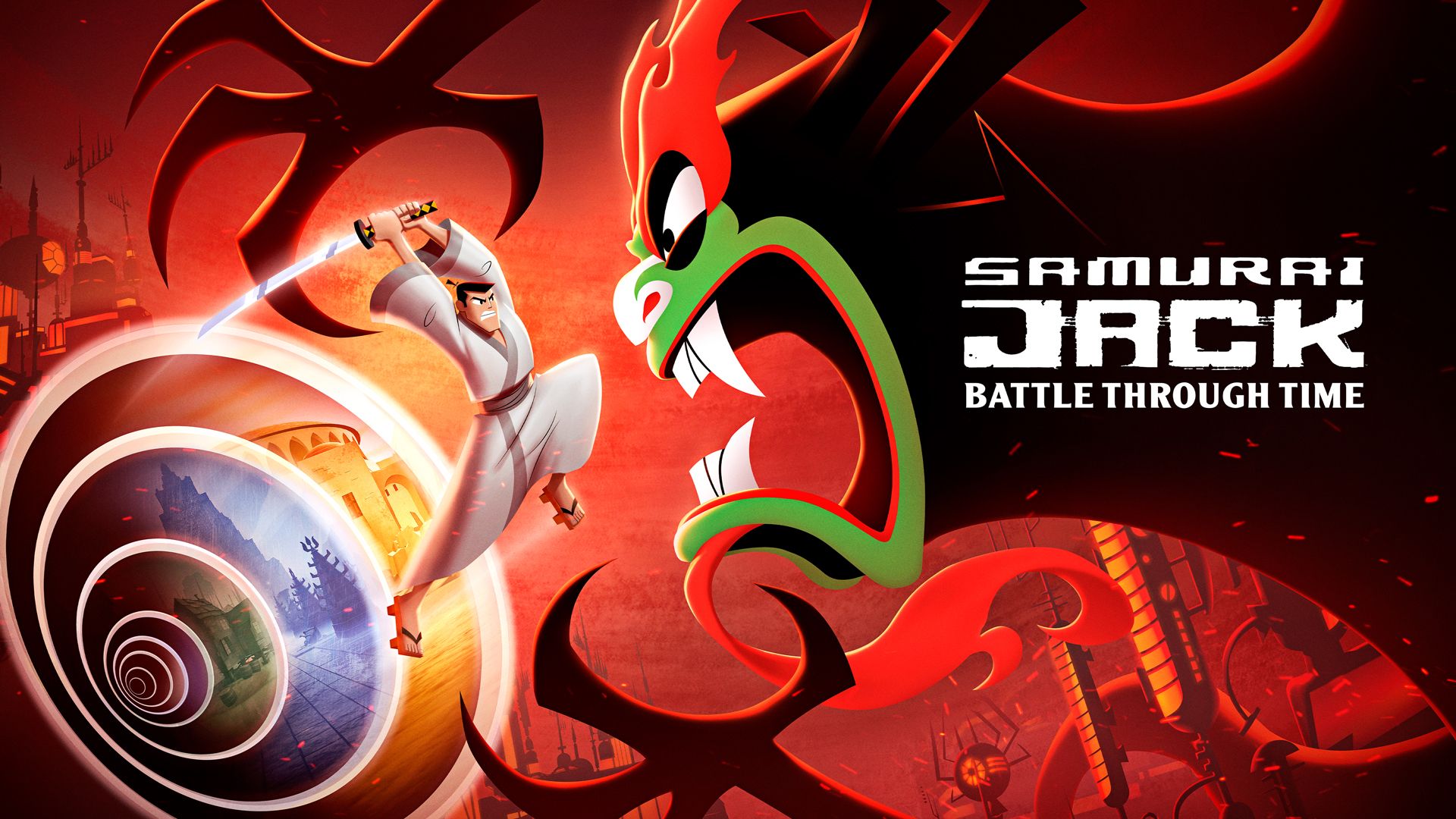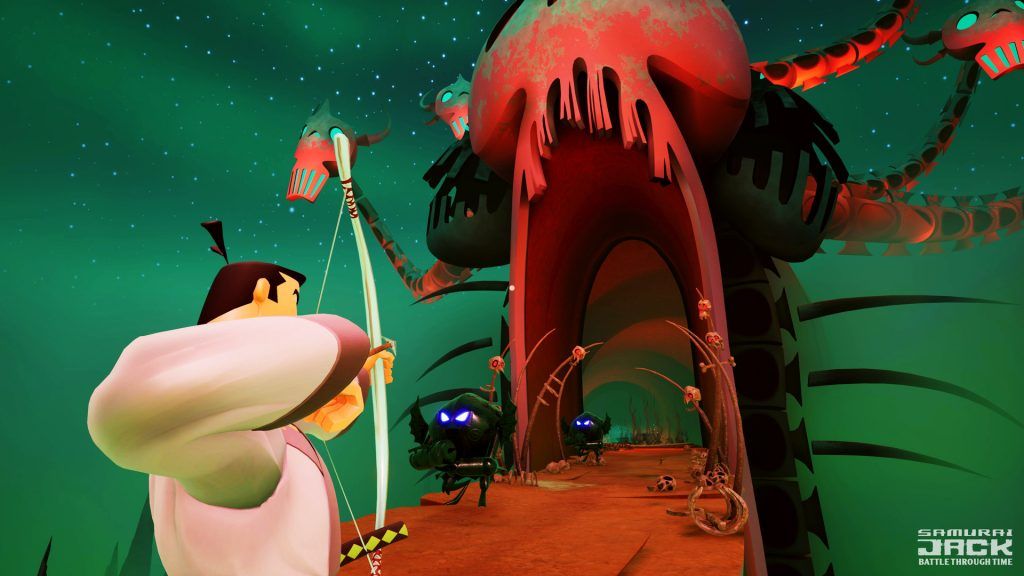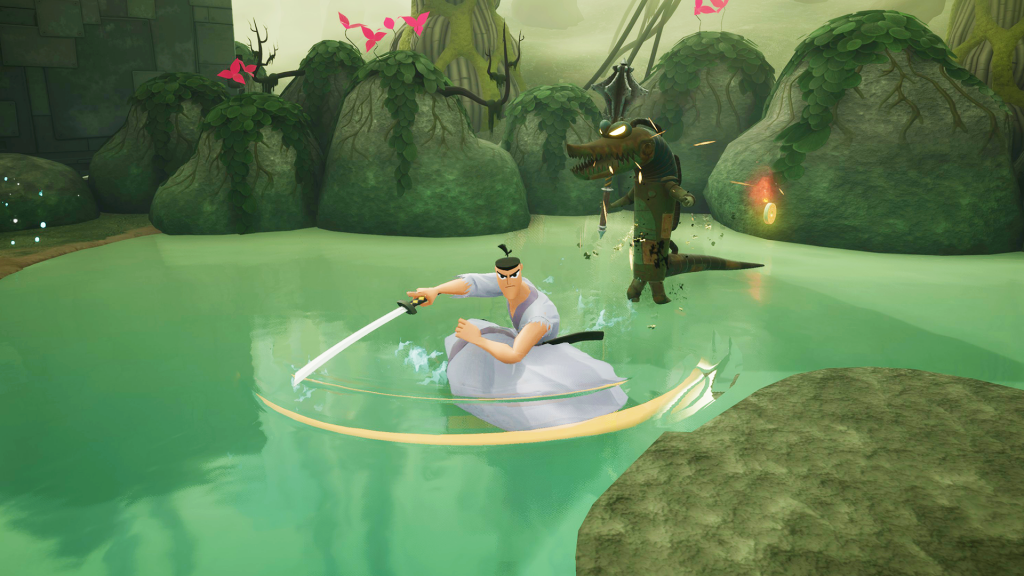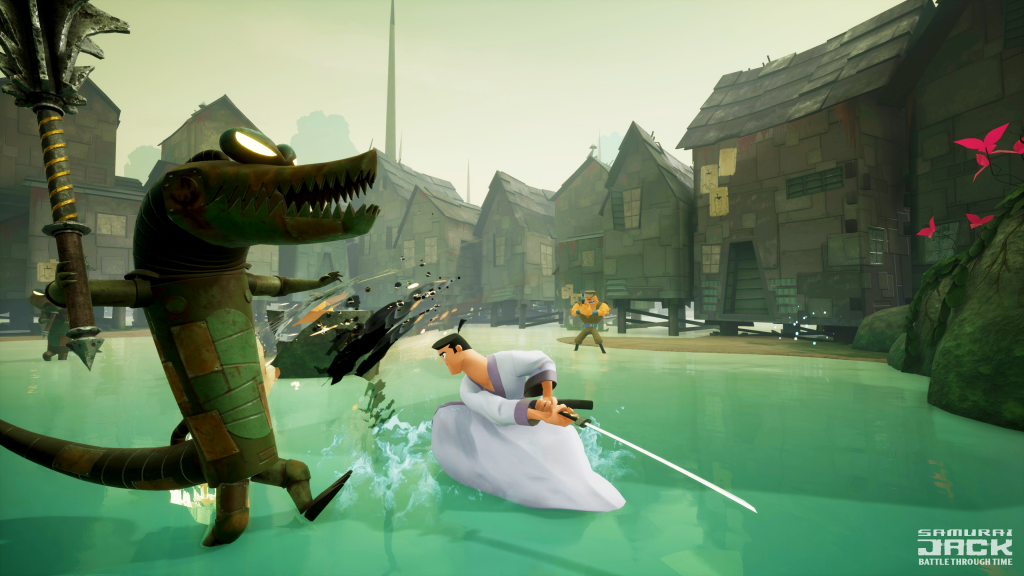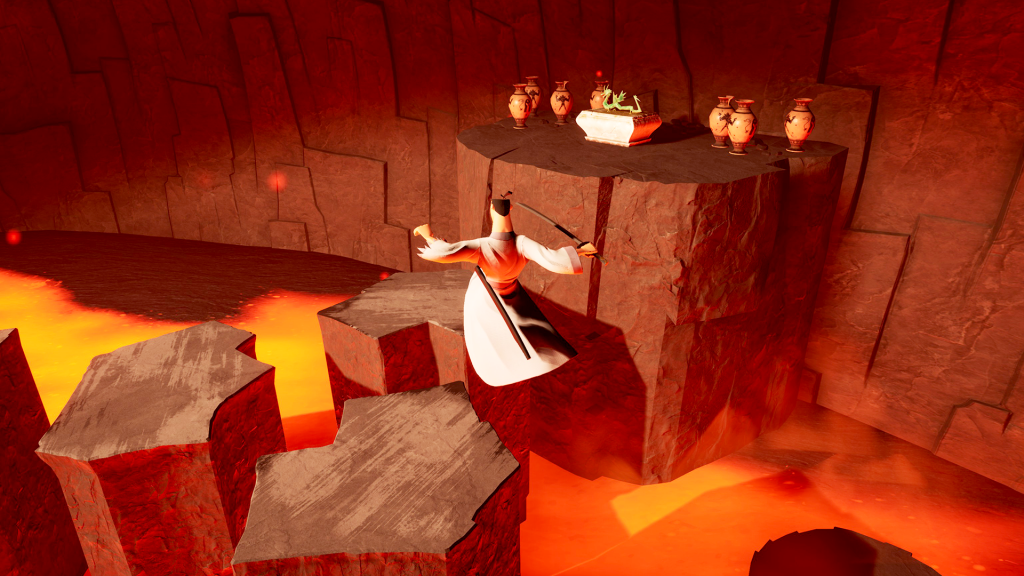Samurai Jack: Battle Through Time feels like it's stuck in the past. Were it a game licensed in the PlayStation 2 and GameCube era, it would be a hidden gem of those libraries. Were it a game released last console generation, it would be seen as the last of the classic Cartoon Network licensed games, still an absolutely solid game, but nothing worth rivaling the best of the generation.
As a game in 2020, at the very end of the eighth console generation, it feels like a relic of a bygone era; Jack lost the battle through time ten years ago.
Samurai Jack: Battle Through Time sees the titular samurai lose a battle against his longtime rival, Aku, and is cast far, far into the past with only his love interest to save him and help him get back to Aku. That's where the game's trouble begins. After a beautiful loading screen and a well-animated scene ripped straight from the show, the game instantly transitions straight into a cutscene in the game's 2000's-era Cartoon Network art style that gave me whiplash. Between stiff animations, models clipping through each other, and texture pop-in, the cutscenes felt like a betrayal of the show's legacy.
[pullquote]"Samurai Jack: Battle Through Time feels like it's stuck in the past."[/pullquote]
Outside of the cutscenes, the game's visuals shine as a much more accurate-feeling representation of the show's minimalist, yet vibrant art style. It's not hard to make minimalist environments in the show's art style, especially considering how linear the levels are, but the game's lighting and colors are what really bring it all together to establish mood and atmosphere.
That mood is most allowed to shine through in the game's two-dimensional sections, which allow you to run through stunning vistas that feel like they're ripped straight from the show. They're probably the best parts of the game. From the cinematic camera panning across the landscapes to the show's iconic, stylish enemies fighting a losing battle to the unstoppable force that is Samurai Jack, they are truly a spectacle to behold.
The moment-to-moment gameplay doesn't quite hold a candle to the overall impressive visual style. The past few years have seen some of the strongest character action games of all-time. Between franchises like God of War, Bayonetta, and Devil May Cry, we've seen vast jumps in the genre and the way games like Samurai Jack: Battle Through Time are designed. Then why does Samurai Jack feel lost in time?
The combat — the game's meat and potatoes — is the leading issue here. Each individual part of the whole feels disjointed from the next. The game features an unnecessarily deep ability tree that feels like one of the only things that it's learned from recent action games like 2018's God of War and last year's Devil May Cry V.
Much like another samurai game that released this year (looking at you, Ghost of Tsushima), Samurai Jack's camera is outright bad. While it does feature a lock-on system that's par for the course, it doesn't transfer between enemies when they're killed, so each time you slay one of Aku's minions, it adds just another thing to focus on.
While the camera lends to a general lack of precision, traversal through levels and finding collectibles are also more of a pain than they should be. Most collectibles are in high-up or otherwise hard to reach places and have to be hit with a ranged weapon to be accessed. There's only one weapon in the game that can be specifically aimed, and even then, it can break and the ammo can be limited.
The close-range combat, on the other hand, is solid, or at least it's solid in a vacuum. It functions like and expects the same precision as a run-of-the-mill character action game, but it doesn't reward it outside of the parry ability, which functions much like it would in other games; if you block an attack within a certain window, you have a certain amount of time to wail on that attack button to dish out some extra damage. Overall, it feels like Devil May Cry and Dynasty Warriors got drunk and made some regrettable decisions in a lot of ways.
Higher difficulties especially feel like you're just being mobbed by spongey enemies like in a Musou game but they can kill you without warning if you're not careful. Each enemy is like combo food, but none of your vast array of weapons is good enough to allow for more freestyle combat, so fighting usually devolves into some form of mashing with style.
Among the weapons available to Jack, the only two that stay with him the entire game are his fists and his trusty katana. Luckily, these two weapons are the most reliable and have the most flexible combos. The rest of Jack's arsenal is divided up into a few categories that can also receive upgrades in the skill tree, but much like the ranged weapons, they're all limited use. That said, I never found myself even close to running out of melee weapons, and the fact that I favored Jack's fists didn't help that.
The other factor that discouraged me from branching out and experimenting with other weapons is the ways that the enemy encounters are designed. For about the first half of the game, I encountered maybe four or five different enemy types, and throughout multiple rounds of fighting, I noticed that even when an enemy looked the same as another from a different area of the level, they didn't necessarily take the same amount of hits to be killed. I never knew if I was about to one-shot every enemy I encountered or if I'd have to combo them a bit.
[pullquote]"[Samurai Jack: Battle Through Time is] the definition of a popcorn game, offering some good looks and shallow fun, even if it feels like it's a remnant of a bygone era."[/pullquote]
This inconsistency branches out to almost every aspect of the game except for the layout and pacing of each level. In fact, the level design was incredibly samey. The same four NPCs from the show appeared multiple times throughout each level and in-between those waypoints were the stunning two-dimensional sections, some light platforming, a combat arena, and a room full of barrels to smash. Sometimes these were even organized into the same order. The filler in-between these areas was even worse than the samey pacing.
Samurai Jack: Battle Through Time might have also broken the original Final Fantasy VII's record for the slowest climbing sections. They are in just about every level and they are excruciatingly slow. At least Jack's limber enough to be able to jump while climbing, but even though they're very short, they're a total pain to experience.
The climbing sequences are emblematic of Samurai Jack: Battle Through Time's biggest overall problems. Every fun and sometimes even fluid (albeit mindless) encounter is bookmarked by a myriad of small problems that snowball to make the experience less enjoyable. It largely keeps the same voice and tone that the source material has, so any fan of the show should play it just to experience how Jack feels. The 2D sections are some of the coolest parts of any licensed game, let alone any game I've played this year. It's the definition of a popcorn game, offering some good looks and shallow fun, even if it feels like it's a remnant of a bygone era.

